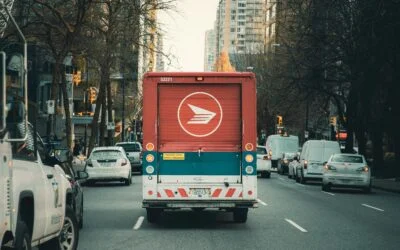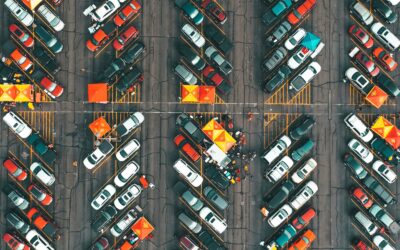As harvest season ramps up, Georgia’s two-lane highways and rural arterials see more slow-moving farm equipment—tractors, combines, grain carts, and oversized implements that travel well under the speed limit and take wide turns into fields and driveways. Dusk arrives earlier, dust and chaff hang in the air, and impatient drivers try risky passes. If you’re injured in a collision involving farm equipment or while swerving to avoid it, the steps you take in the first 24–48 hours can protect your health and your claim.
Why these crashes spike in the fall
Large machines often move between fields at 15–25 mph on unlit roads just as workers, school traffic, and commuters head home. Visibility drops at dusk, and tall crops or rolling hills shorten sight distance. Common crash patterns include: (1) a driver rear-ends a tractor at sunset; (2) a car begins to pass as the tractor turns left into a field drive; (3) a wide implement encroaches over the centerline on a curve; (4) a motorist swerves to avoid an unlit or unmarked implement and hits a ditch, mailbox, or oncoming vehicle.
Who may be liable
Georgia is a fault state. Liability rests with the person or company that failed to use reasonable care, which can include:
- Other drivers who tailgate, pass in a no-passing zone, or fail to slow for conditions.
- Farm operators or contractors if equipment lacked required lighting/reflectors, was operated after dark without proper markings, blocked both lanes unsafely, or turned left without signaling or checking for passing traffic.
- Equipment haulers for unsecured or over-width loads without flags or escort vehicles when required.
- Product manufacturers (rare) for mechanical defects that contributed to the crash. Fault can be shared. Even if you braked late or swerved, you may still recover if the farm vehicle was unmarked or turned across your path without a safe gap.
What to do right away
- Call 911 and get medical care. Concussions and neck/back injuries often appear hours later; early evaluation links symptoms to the crash.
- Photograph the approach and markings. Before anything moves, take wide shots showing the roadway, hills/curves, lane markings, and where you first saw the equipment. Capture whether the tractor had the slow-moving vehicle triangle, reflective tape, lights/flashers on, over-width flags, and escort vehicles.
- Document the turn or pass. If the tractor was turning left, photograph the field drive/entrance, the signal status, and tire tracks indicating the turn path. If a pass was involved, capture no-passing signs, double-yellow lines, and sight distance.
- Record conditions. Note time of day, sun position, glare, dust or smoke, leaf cover, and weather; take photos facing the same direction you were traveling.
- Identify witnesses. Get contact info for following drivers, farm hands, or neighbors who saw speed, lighting, or signaling. Ask nearby homes or barns to preserve exterior camera footage; save dash-cam files.
- Limit statements. Provide basics to officers and insurers; avoid recorded statements or estimates of speed/fault until you’ve spoken with an attorney.
- Follow treatment plans. Keep every appointment and save receipts and mileage—consistent care strengthens a Georgia injury claim.
Insurance layers that may apply
- At-fault driver/farm policy: Many farms carry commercial or farm umbrella policies that can significantly increase available limits.
- Your coverages: MedPay can help with immediate bills regardless of fault; UM/UIM (uninsured/underinsured motorist) fills gaps if the at-fault policy is minimal or liability is disputed; collision/comprehensive address vehicle damage depending on impact type.
- Hauler or contractor policies: If equipment was being transported, separate commercial policies may stack.
Common injuries and damages
These crashes often cause whiplash and herniated discs, concussions with headaches and light sensitivity, shoulder/knee injuries from bracing, fractures, and anxiety about night or rural driving. You can pursue compensation for ER and follow-up care, imaging and therapy, future treatment, lost wages or reduced earning capacity, pain and suffering, and vehicle repair or total loss. Keep and claim necessary replacements—child car seats, glasses, phones, or laptops damaged in the wreck.
Mistakes that reduce case value
Leaving without photographing lighting/markings and the approach path, giving a recorded statement too early, gaps in medical care, posting about the crash on social media, and accepting a quick low offer before the full medical picture is clear.
Prevention tips for fall drives
Slow immediately when you spot the orange triangle or flashing ambers; assume a left turn into a field or driveway is coming. Do not pass on hills, curves, or double-yellow segments; allow extra space for wide implements; and use headlights at dusk and in dust or light rain.
How Gunn Law Group proves rural-road negligence
We move fast to preserve what disappears first: photos of lighting and markings, 911 audio and body-cam, dash-cam/CCTV footage, and event-data recorder downloads showing speed and braking. We analyze sight distance, signage, and the turn geometry, and we obtain farm or contractor insurance details and maintenance records. Then we coordinate with your medical providers to document the full impact on your life and negotiate with every responsible insurer—personal, commercial, and farm umbrella—to pursue the maximum compensation Georgia law allows.
A sunset drive shouldn’t end with a tow truck and hospital wristband. If a tractor or combine collision derailed your day, don’t go it alone. Need a home run? Call the Big Gunn at 888-BIG-GUNN for a free case review with an Atlanta personal injury lawyer who knows how to win rural-road claims.




